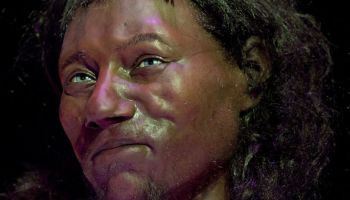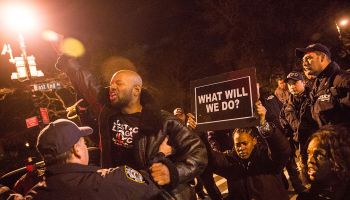By Gillian Gane
Toni Morrison’s newest novel takes us way back in history, further than she has ever gone before—to 1680 and earlier, before the United States of America existed. Yet, oddly, A Mercy speaks compellingly to the new America of the twenty-first century.
Though Beloved will remain Morrison’s most powerful treatment of slavery, this shorter novel gives us a picture of a more diverse and perhaps more hopeful America.
Most characters in A Mercy are damaged people with little power to shape their own lives, and few of them can be said to own themselves. But it is not only black Africans who are bought and sold, and it is not only slavery as such that damages people. All four of the women on Jacob Vaark’s farm have been sold or given to him by others: apart from the central character Florens, an actual slave who is thrust upon Jacob by a man who owes him money—and by her own African mother, who pleads for his “mercy” on the child—there is the Native American Lina, Jacob’s own English wife Rebekka, and the strange “mongrelized” Sorrow, all of whom Jacob effectively owns. And besides these womenfolk, there are indentured laborers—slaves on the installment plan, so to speak—including Scully and Willard, the two gay white men who help out on Vaark’s farm and whose period of bondage keeps being extended. None of these people is evil, and none of them is perfect. For the most part, despite the differences among them in race and status, they work together and help one another.
In Beloved, Sethe famously kills her baby daughter rather than see her returned to slavery. In A Mercy, the nameless mother of Florens makes a different choice. As she holds on to the baby boy she is still breastfeeding, she kneels in front of Jacob Vaark and begs him to take her young daughter instead of herself. Only in the very last pages of the novel do we hear the voice of the mother herself, explaining that Florens was developing breasts and drawing harmful attention. “To be female in this place is to be an open wound that cannot heal,” she says. Because she can tell that Jacob sees Florens as a human being, the mother begs him to take her away for the child’s own sake.
The fact that she is a slave does not at first bother Florens: “I don’t know the feeling of or what it means, free or not free,” she says. However, what she perceives as her mother’s rejection of her leaves her painfully vulnerable and needy. She becomes besotted with a young black blacksmith—and resentful of the foundling boy child the smith has taken in (like her mother, the smith favors a boy over her, she thinks). After she injures the child, who has been left in her care, she is devastated when the smith coldly sends her home. She is a slave, he says—she has become a slave. It is not her legal status that makes her a slave, but the choices she has made: “Your head is empty and your body is wild,” he says, and her adoration of him is another kind of enslavement.
By the end of the novel Florens is back on the Vaark farm—since Jacob’s death a fragile community of “unmastered women.” The widowed Rebekka has started going to church and is increasingly harsh in her treatment of the other women. Sorrow has given birth to a baby that lives and has changed her name to Complete. Florens is scratching her story with a nail on the walls of the empty mansion that Jacob built. She has learned from her journey: “Slave. Free. I last,” she announces.
If race is a faultline running through the nation’s history, A Mercy takes us back to a time when its significance was still fluid. In this novel we see hardship and suffering and the difficulty of owning oneself, but we also see the interconnectedness of people of different races—an apt vision for this year in which the nation has elected its first African-American president.
Biographical note:
Gillian Gane retired in 2007 from teaching at Hamilton College in New York State. She has recently returned to the US after teaching for a year and a half at the University of Zululand in South Africa.
















